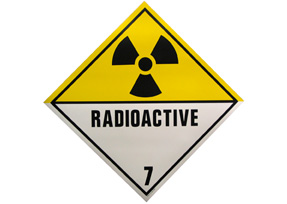Types of Radioactive Waste
Radioactive waste can be classified as high-level waste, intermediate-level waste, low-level waste and transuranic waste. High level waste is the waste generated by nuclear reactors on completion of the nuclear process. It includes spent nuclear fuel and control rods, waste produced by defense programs and testing. Intermediate level waste is the waste produced by mining operations of uranium ores. Low level waste includes used protective clothing and filters which contain radioactive residues which are potentially lethal when kept in close proximity with humans. Transuranic waste is waste that is produced or contains transuranic isotopes or residues of them. The term transuranic applies to elements having atomic numbers greater than that of uranium. In the US, transuranic waste is a byproduct of the production of nuclear weapons.
Radioactive Waste Management
Subductive waste disposal method is the safest and a long term stable disposal technique. The idea being that a tectonic plate slides beneath the other and is rearranged into the earth’s mantle. The technique uses this shifting phenomenon to safely dispose the waste into the mantle where the waste will be naturally diluted and absorbed into the mantle. Places where the tectonic plates meet in the ocean floor would be the easiest to access for creating a repository of radioactive wastes.
Recycling of nuclear waste is done by reprocessing the waste to produce a product that can be reused for other purposes. This concerns radioactive isotopes which can find use in other applications particularly industrial processes. The issue that is to be considered here is the radioactive strength of these isotopes on reprocessing. However the benefit of using recycling and reusing is the possible reduction of the amount of waste that needs to be disposed.
Transmutation is another reprocessing technique where dangerous radioactive isotopes are reprocessed to produce less harmful waste products that can then be safely disposed. However the technique merely reduces the risk involved in disposing such lethal waste rather than actually reducing the waste.
Another technique called vitrification is used to stabilize the waste products. The stabilized contents in the form of glass are then stored in secure steel containers and buried underground thus immobilizing the contents for a long period of time.
Geologic disposal is a controversial technique often used to dispose radioactive waste. The technique involves storing nuclear waste securely in concrete bunkers in to the deepest locations beneath the earth’s crust. This however ensures a natural isolation of the waste products for thousands of years.
Disposal of radioactive waste to outer space is an option. This is done by loading the radioactive waste on rockets. The technique though has its own problems. The most serious of them all being the failure of the launch vehicle that is used. Another problem is the limitation due to the carrying capacity of the rocket. Also, the energy-intensive operation of launching rockets is not an economically viable option for disposing off nuclear wastes. Restrictions on such techniques by international regulations and agreements makes it even more complicated.










